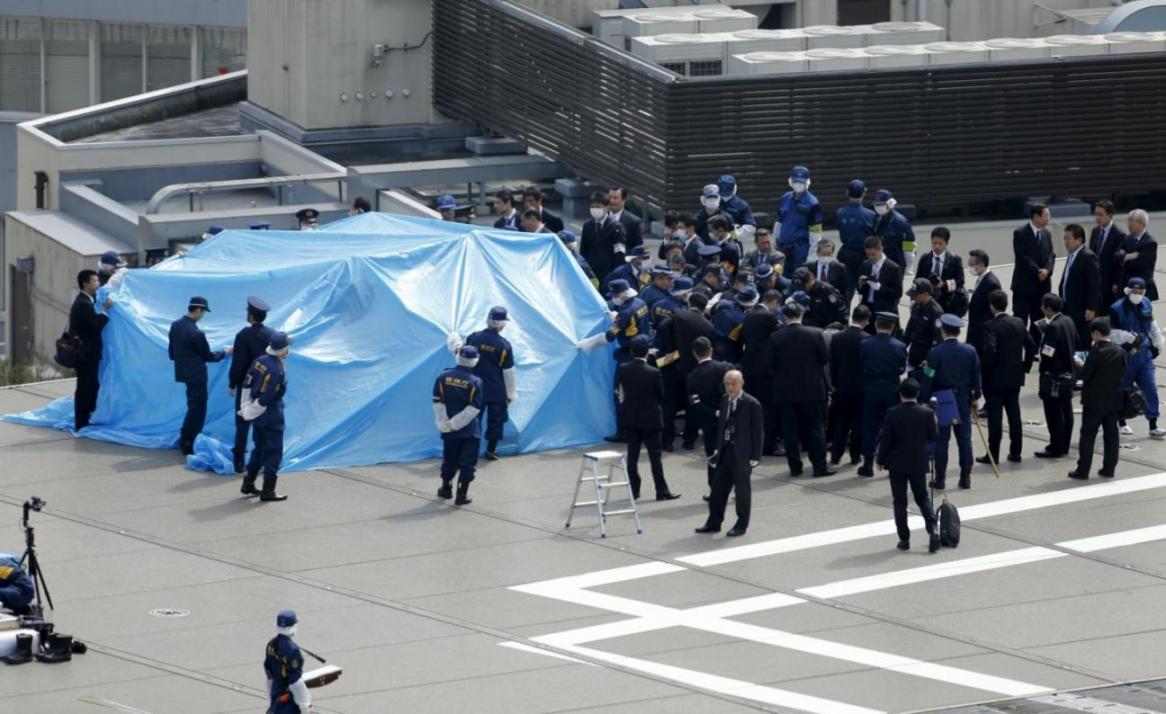Japanese police say a drone found on the roof of Prime Minister Shinzo Abe’s offices on Wednesday may have been controlled by someone up to 1.2 kilometers away, NHK News World reported on Friday.
Tokyo police suspect someone was intentionally flying the drone over the building, as it was carrying a plastic bottle containing radioactive cesium. Sources say the drone was equipped with a transmitter to send footage taken by its camera hence why it could land on the roof without any disturbance.
The drone’s maker says the transmitter allows the controller to use the camera from a distance of up to 1.2 kilometers.
Japan’s Asahi Shimbum stated the drone was found by chance when a staff member in the prime minister’s office guided a group of new employees to the rooftop in a tour of the building. Since water had collected on the body, it is believed the drone was already on the roof for an unknown period before it was discovered.
The prime minister’s office is the nerve center of the nation’s crisis management, an issue of importance stressed by the Abe administration.
But the crucial facility has proved completely defenseless against aerial attacks.
The flight onto the prime minister’s office building has drawn renewed public attention in Japan to drones.
Drones equipped with computers and cameras that can fly autonomously by using geographical information obtained through a global positioning system can be easily bought by a variety of methods.
In Japan, drones were used for investigations into the disaster-stricken Fukushima No. 1 nuclear power plant and for confirming ash fall after Mount Ontakesan erupted last year.
Drones are expected to be used for a wide range of purposes in the coming years, including disaster relief operations and distribution services.
On the other hand, the growing popularity and availability of drones have produced various problems, including accidents, use for criminal purposes and invasion of privacy caused by trespassing into private properties.
The policy responses to the situation and the regulatory system are lagging behind the reality of rapid growth in the use of drones.
The drone involved in the latest incident is a model called Phantom, which is manufactured by Chinese drone maker DJI. In response to what happened, the company announced that it started including areas around the prime minister’s office and the Imperial Palace as no-fly zones in the GPS-based guidance system for its drones.
DJI’s drones cannot take off or fly in the designated areas even if the operators try to make them do so.
Drone-hunting drones, which can down other small unmanned aircraft, are under development. One such drone is designed to entangle a special string in the rotors of drones.


